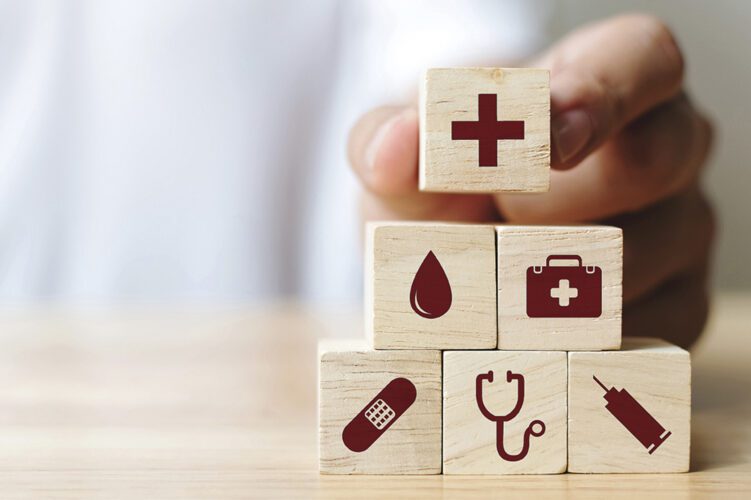Sexually transmitted diseases (STDs) result from sexually transmitted infections (STIs). These infections can be viral, bacterial, or parasitic. An STI may not turn into an STD.
This article will discuss types of STDs, how they spread, how they are treated, and ways to prevent them.
Guido Mieth / Getty Images
List of Common STDs
Common STDs include:
How Are STDs Transmitted?
STDs are caused by viral, bacterial, or parasitic infections that are spread from one person to another. They can be transmitted through:
Ejaculation and/or penetrative sex do not need to occur for an STD to be spread. They can be spread from vagina to vagina and from mouth to genital/anal contact as well as penis in vagina or penis in anus.
The consistent and correct use of condoms can help prevent the spread of STDs, but some STDs can be transmitted even with a condom. For example, herpes sores and syphilis sores may occur outside the area covered by a condom, and some STDs (such as HPV and pubic lice) can be spread by close skin-to-skin contact.
Story continues
Some STDs can be passed from pregnant parent to baby during pregnancy or birth.
Except for pubic lice, STDs are not spread via toilet seats, bedding, swimming pools, or touching everyday objects like doorknobs.
Shared sex objects, such as dildos, can spread STDs if a new condom is not used for each user and if they are not thoroughly cleaned between users.
Pubic lice can sometimes be spread by using towels, clothing, or bedding after someone with public lice has used them.
Hepatitis B and HIV are spread through body fluids such as blood, semen, and vaginal fluids. In addition to sexual contact, they can be contracted in ways such as:
Sharing needles, syringes, or drug preparation equipment
Direct contact with the blood or open sores of a person who has hepatitis B or HIV (including contact with blood from needlesticks or other sharp instruments)
Sharing items that may contain blood, such as toothbrushes, razors, or medical equipment (like a glucose monitor)
From birthing parent to baby
STD Symptoms
STDs often have no symptoms, mild symptoms, or delayed symptoms.
Specific symptoms vary by the type of STD, but some basic STD symptoms include:
Unusual vaginal discharge (color, consistency, amount, smell, bleeding, etc.)
Itching, burning, redness, or soreness around/in the genitals
Pain or burning when peeing or after ejaculation
Discomfort during sex
Discharge from the penis
Pain/swelling in one or both testicles
Rectal pain (including bowel movements), discharge, itching, and/or bleeding
Flu-like symptoms (such as fever, swollen glands, and body aches)
Blisters (which break and turn into sores) on/around the genitals, rectum, or mouth
Bump or group of bumps in the genital area (can be small, large, raised, flat, or shaped like a cauliflower)
A sore (usually firm, round, and painless) that lasts about three to six weeks then goes away (can indicate the first stage of syphilis, which still needs treatment after the sore heals, and left untreated, syphilis can progress into serious symptoms and complications)
Pubic lice can have additional symptoms, such as:
Small bugs in the pubic area
Eggs (nits) on the bottom of the pubic hairs
Dark or bluish spots on the skin from bites
Acute hepatitis B can have additional symptoms, such as:
Two to four weeks after infection with HIV, some (but not all) people have a flu-like illness. Symptoms may include:
Fever
Chills
Night sweats
Rash
Sore throat
Muscle aches
Fatigue
Swollen lymph nodes
Mouth ulcers
Left untreated, HIV can progress to AIDS, which has more serious symptoms and can be fatal.
What If You’re Asymptomatic?
Many people with STDs do not have any symptoms, or have symptoms that can be mistaken for something else. The only way to tell if you have an STD is to be tested. If you are or have been sexually active, it’s important to get tested for STDs regularly.
When to See a Healthcare Provider
Talk to your healthcare provider about routine STD testing. You should also see your healthcare provider if you have symptoms of an STD, have (or may have) been exposed to an STD, have questions about preventing STDs, or have any concerns.
Where to Get Tested for STDs
Places that provide STD testing include:
Home testing kits may be available from some clinics for some STDs.
Screening for STDs
If you have symptoms of an STD, your healthcare provider will do an examination, which may include looking at your genital or anal area or your mouth for sores, discharge, or other symptoms. They may do tests such as swabs of discharge or fluid from sores, urine samples, or blood tests.
If you are sexually active, talk to your healthcare provider about getting routine STD checks.
Which tests are recommended and when depends on a number of factors, including:
Age
Gender or type of reproductive system
Sexual practices (including types of sex, partners, etc.)
Pregnancy status
Risk factors
People with a uterus should also be screened regularly for cervical cancer, which can develop from HPV.
Treatment for STDs
Trich, and STDs from bacterial infections, such as BV, Mgen, syphilis, chlamydia, and gonorrhea, can be treated with antibiotics. These STDs can be cured with the proper treatment, but you can be reinfected if exposed again after treatment. Early treatment is essential, as antibiotics may not reverse damage from the infection.
Herpes, HIV, and hepatitis B cannot be cured, but antivirals can help manage the condition and minimize complications.
Pubic lice are typically treated with over-the-counter topical or prescription medications (especially if there are lice in the eyebrows or eyelashes).
There is no treatment for HPV, but it usually clears up within a few years. If HPV progresses to genital warts, prescription treatment is available.
If HPV develops into cervical cancer or precancer, your healthcare provider will discuss the best options for treatment.
It is important that both partners be tested for STDs and treated, if necessary, to avoid infecting or reinfecting the other partner. Abstaining from sex for a period of time during or after treatment may be necessary.
Complications of Untreated STDs
Left untreated, STDs can lead to complications, even if your STD is asymptomatic. Complications vary by type of infection, but untreated STDs may lead to:
Pregnancy complications
Pelvic inflammatory disease (PID)
Fertility problems
Increased risk of contracting other STDs
Damage to other areas of the body, such as blood, joints, immune system, or organs like the eyes or liver
Cancers (such as cancer of the cervix, vulva, vagina, penis, anus, throat, tongue, or tonsils)
Left untreated, STDs can lead to pregnancy and birth complications.
Complications vary depending on the STD, but may include:
Premature birth
Low birth weight
Eye infection (baby)
Pneumonia (baby)
Transmission of infection from pregnant parent to baby
Pregnancy loss
Serious complications such as cataracts, deafness, seizures, or neonatal herpes (a potentially fatal infection from HSV)
If you are pregnant or planning to become pregnant, talk to your healthcare provider about screening for STDs. Measures can be taken to lower the risk of these complications.
How to Prevent STDs
Ways to lower the risk of developing an STD include:
Avoid sex.
Use condoms (and dental dams for oral sex) correctly and every time you have sex.
Discuss STDs and safer sex with your sexual partner before sex.
Limit your number of sex partners.
Avoid sex activities like unprotected sex that can make you vulnerable to infection (and be mindful that drug or alcohol intoxication before sex can make it more likely you will engage in these activities).
Avoid sex until you and/or your partner has been treated for a known STD (such as bacterial STDs and trich) or if you or your partner has herpes symptoms, genital warts, or other symptoms (note that STDs can spread without symptoms).
Get vaccinated (both HPV and hepatitis B have safe and effective vaccines available)
If you have herpes, take your anti-herpes medication exactly as directed (if your partner has herpes, make sure they do, too).
If you have risk factors for HIV infection, talk to your healthcare provider about taking either pre-exposure prophylaxis (PrEP) or postexposure prophylaxis (PEP) to lower your risk of infection.
If you have HIV, get on (and stay on) antiretroviral therapy (ART), which can greatly lower the amount of virus in your blood and body fluids (even to the point of being undetectable) and reduce the risk of transmitting HIV to sexual partners.
Discovered on: 2023-03-16 18:36:02
Source: What Are STDs (Sexually Transmitted Diseases)?



